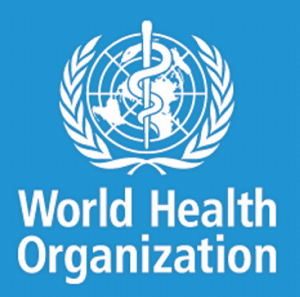One in three women globally experiences violence – WHO report
 A new report by the World Health Organization (WHO), indicates that worldwide, one in three women experiences violence.
A new report by the World Health Organization (WHO), indicates that worldwide, one in three women experiences violence.
The report, which was made available to the Ghana News Agency by the WHO, revealed that violence against women remained “devastatingly pervasive and starts alarmingly young; – younger women among those most at risk”.
It said across their lifetime, one in three women, around 736 million, were subjected to physical or sexual violence by an intimate partner or sexual violence from a non-partner – a number that has remained largely unchanged over the past decade.
It showed “that this violence starts early: one in four young women (aged 15-24 years) who had been in a relationship would have already experienced violence by an intimate partner by the time they reach their mid-twenties”.
The report urged countries to honour their commitments to increased and strong political will and leadership to tackle violence against women in all its forms.
“Violence against women is endemic in every country and culture, causing harm to millions of women and their families, and has been exacerbated by the COVID-19 pandemic,” said Dr Tedros Adhanom Ghebreyesus, WHO Director-General.
“But unlike COVID-19, violence against women cannot be stopped with a vaccine. We can only fight it with deep-rooted and sustained efforts – by governments, communities and individuals – to change harmful attitudes, improve access to opportunities and services for women and girls, and foster healthy and mutually respectful relationships.”
The report said intimate partner violence was by far the most prevalent form of violence against women globally (affecting around 641 million).
It indicated that however, six per cent of women globally reported being sexually assaulted by someone other than their husband or partner.
It said given the high levels of stigma and under-reporting of sexual abuse, the true figure was likely to be significantly higher.
It said while the numbers reveal already alarmingly high rates of violence against women and girls, they did not reflect the ongoing impact of the COVID-19 pandemic.
It said the WHO and partners warned that the COVID-19 pandemic had further increased women’s exposure to violence, as a result of measures such as lockdowns and disruptions to vital support services.
Madam Phumzile Mlambo-Ngcuka, UN Women Executive Director, said: “It’s deeply disturbing that this pervasive violence by men against women not only persists unchanged, but is at its worst for young women aged 15-24 who may also be young mothers. And that was the situation before the pandemic stay-at home orders. We know that the multiple impacts of COVID-19 have triggered a “shadow pandemic” of increased reported violence of all kinds against women and girls.”
“Every government should be taking strong, proactive steps to address this, and involving women in doing so”, she added.
The report said though many countries had seen increased reporting of intimate partner violence to helplines, police, health workers, teachers, and other service providers during lockdowns, the full impact of the pandemic on prevalence would only be established as surveys are resumed, the report notes.
It said violence disproportionately affects women living in low- and lower-middle-income countries.
It noted that “an estimated 37 per cent of women living in the poorest countries had experienced physical and/or sexual intimate partner violence in their life, with some of these countries having a prevalence as high as one in two”.
It said the regions of Oceania, Southern Asia and Sub-Saharan Africa had the highest prevalence rates of intimate partner violence among women aged 15-49, ranging from 33 per cent – 51 per cent.
The lowest rates were found in Europe (16–23 per cent), Central Asia (18 per cent), Eastern Asia (20 per cent) and South-Eastern Asia (21 per cent).
The report, dubbed: “Global, regional and national estimates for intimate partner violence against women and global and regional estimates for non-partner sexual violence against women”, was developed by WHO and the UNDP-UNFPA-UNICEF-WHO-World Bank Special Programme of Research, Development and Research Training in Human Reproduction (HRP) for the United Nations Inter-Agency Working Group on Violence Against Women Estimation and Data.
Source: GNA
